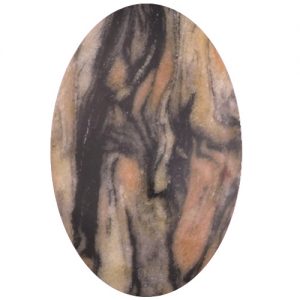Eclogite
Eclogite is a mafic metamorphic rock. Eclogite forms at pressures greater than those typical of the crust of the Earth. An unusually dense rock, eclogite can play an important role in driving convection within the solid Earth.The fresh rock can be striking in appearance, with red to pink garnet in a green matrix of sodium-rich pyroxene (omphacite). Eclogite is a rare and important rock because it is formed only by conditions typically found in the mantle or the lowermost part of thickened crust.
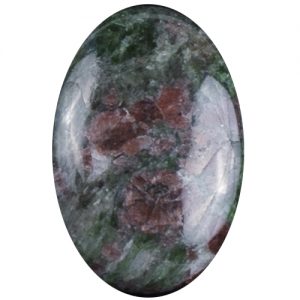
Serpentine
The serpentine subgroup (part of the kaolinite-serpentine group) are greenish, brownish, or spotted minerals commonly found in serpentinite rocks. The name is thought to come from the greenish color being that of a serpent.
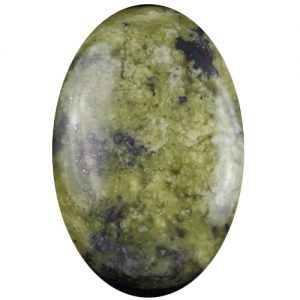
Thulite
Thulite is a translucent, crystalline or massive pink manganese-bearing variety of the mineral zoisite. Thulite was first discovered at a place called Sauland in Telemark, Norway in 1820. It is named after the mythical island of Thule in the belief that the island is Scandinavia. Thulite is used as a gemstone and carving material in the manufacture of jewelry and ornamental objects.
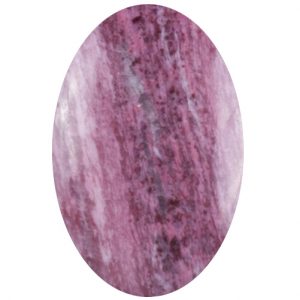
Larvikite
Larvikite is an igneous rock, specifically a variety of monzonite.The name originates from the town of Larvik in Norway, where this type of igneous rock is found. Many quarries exploit larvikite in the vicinity of Larvik. Larvikite is prized for its high polish and the labradorescence of its feldspar crystals. It is known informally as Blue Pearl Granite, although this is not an accurate description.
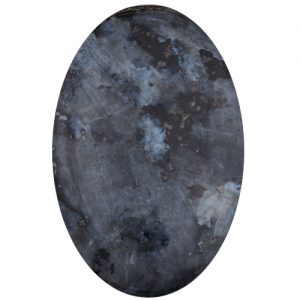
Jasper
Jasper, an aggregate of microgranular quartz and/or chalcedony and other mineral phases, is an opaque, impure variety of silica, usually red, yellow, brown or green in color; and rarely blue. The common red color is due to iron inclusions. Jasper breaks with a smooth surface and is used for ornamentation or as a gemstone.
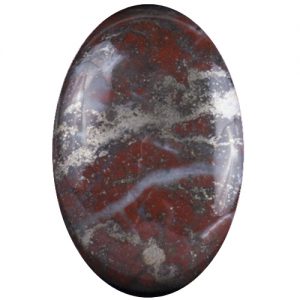
Skriftgranit
Skriftgranittis a regular aggregation of quartz and feldspar. The quartz inclusions may, in certain sections, be reminiscent of wedge-writing characters. The same phenomenon on a microscopic scale is called micrographic texture, granophobic. Typical granite is common in Norwegian granite pegmatites.
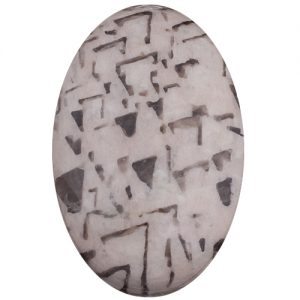
Vasskis
Norwegian name of a finegrained pyrite in a dark groundmass (argillitic pyrite ore). When polished or tumbled often used in jewelry.
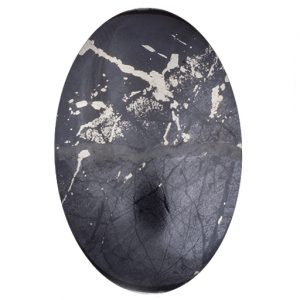
Ryolite
Rhyolite is an extrusive igneous rock with a very high silica content. It is usually pink or gray in color with grains so small that they are difficult to observe without a hand lens. Rhyolite is made up of quartz, plagioclase, and sanidine, with minor amounts of hornblende and biotite.
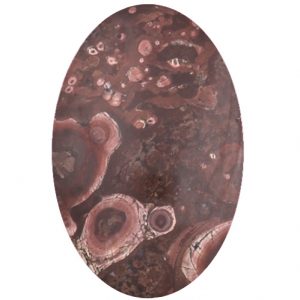
Lapis Lazuli
Lapis lazuli or lapis for short, is a deep-blue metamorphic rock used as a semi-precious stone that has been prized since antiquity for its intense color. The most important mineral component of lapis lazuli is lazurite, a feldspathoid silicate mineral. Most lapis lazuli also contains calcite (white), sodalite (blue), and pyrite (metallic yellow). Some samples of lapis lazuli contain augite, diopside, enstatite, mica, hauynite, hornblende, nosean, and sulfur-rich lllingite geyerite. Lapis takes an excellent polish and can be made into jewelry, carvings, boxes, mosaics, ornaments, small statues, and vases. During the Renaissance, lapis was ground and processed to make the pigment ultramarine for use in frescoes and oil painting.
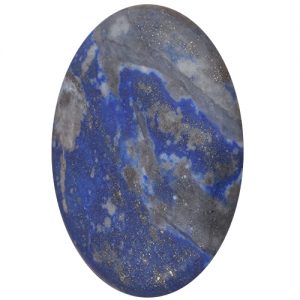
Mylonite
Mylonite is a fine-grained, compact metamorphic rock produced by dynamic recrystallization of the constituent minerals resulting in a reduction of the grain size of the rock. Mylonites can have many different mineralogical compositions; it is a classification based on the textural appearance of the rock. Mylonite is a metamorphic rock formed by ductile deformation during intense shearing encountered during folding and faulting, a process termed cataclastic or dynamic metamorphism. The word mylonite is derived from the Greek word for mill.
